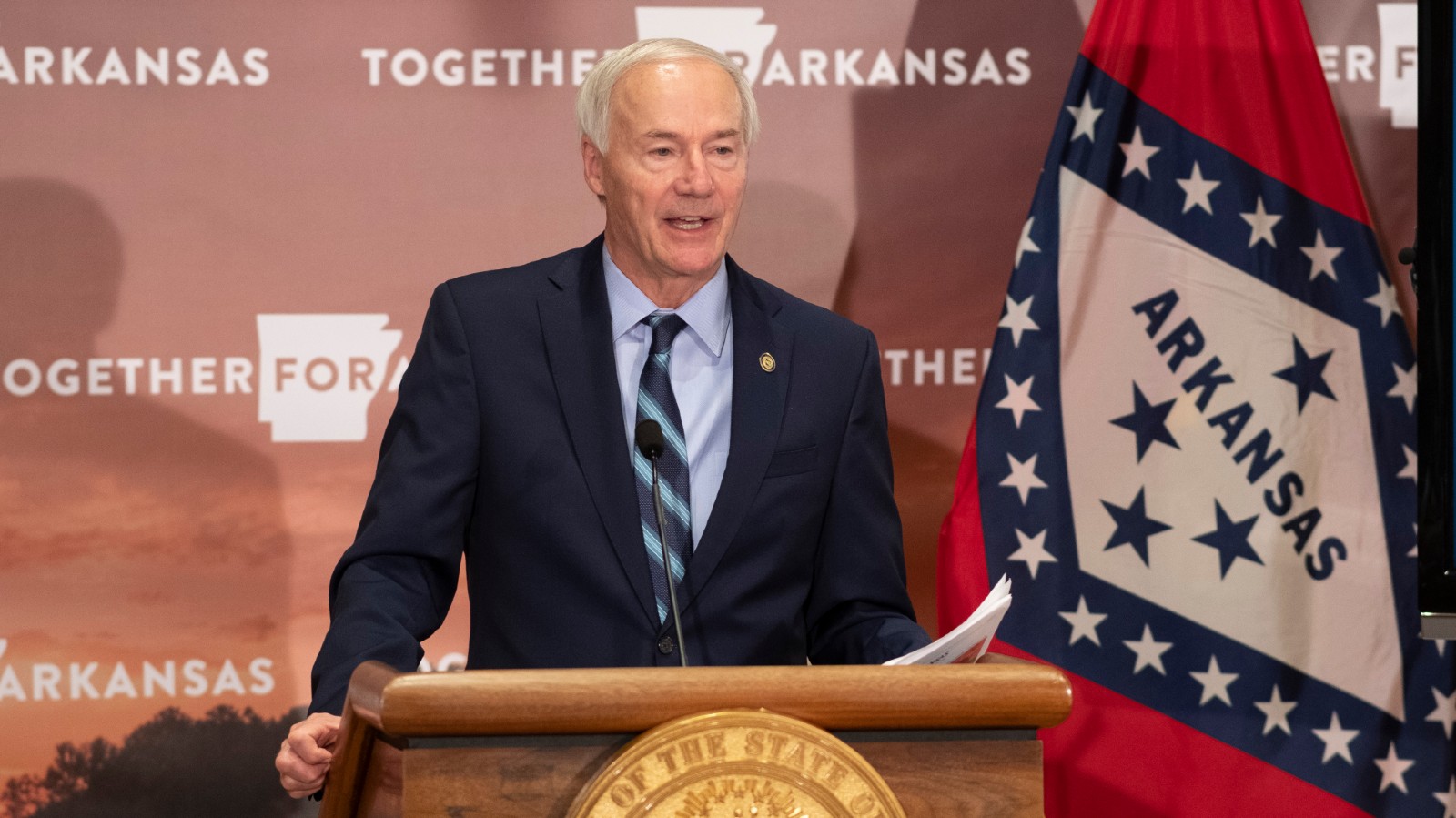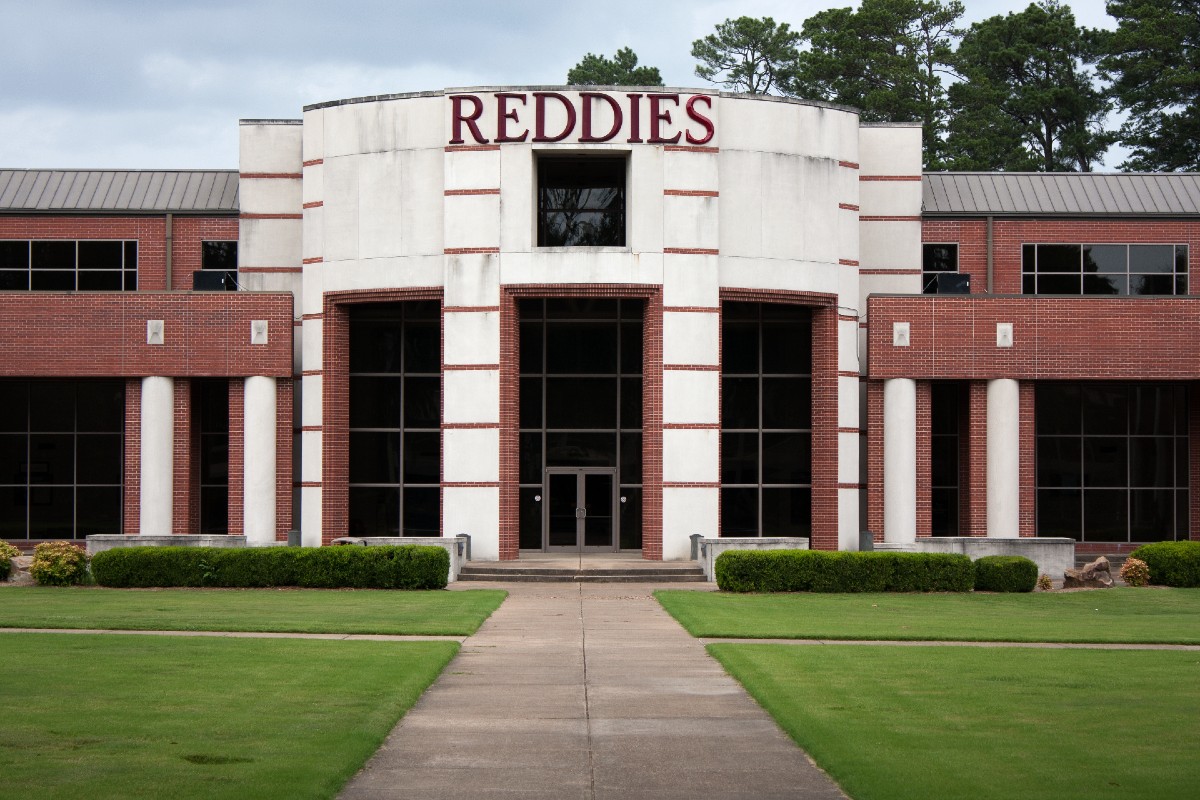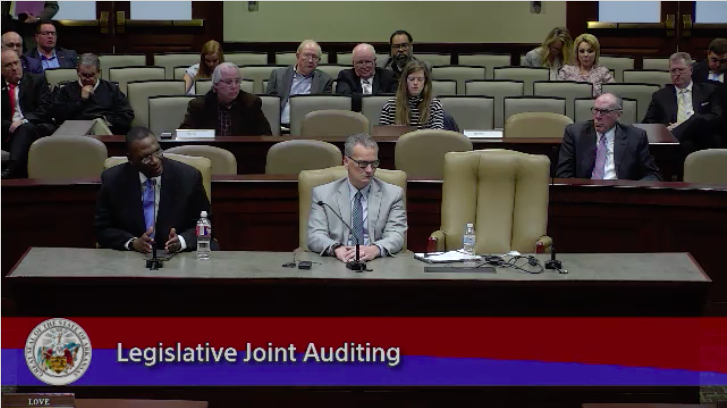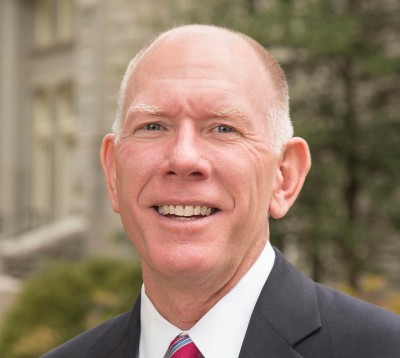Three years ago, Henderson State University was on the brink of insolvency, its balance sheet loaded with millions of dollars in uncollectible student accounts. Only an emergency $6 million loan from the state in 2019 allowed the small Arkadelphia school to keep its doors open.Today, a new chancellor, a merger with the Arkansas State University System, an improved credit rating and a subsiding pandemic all suggest Henderson’s darkest days are behind it. But for many faculty and staff members, the hardest part still lies ahead.
Layoffs and budget cuts loom in the near future. Most faculty and staff are now furloughed for one day each week — an effective 20% pay cut. Over the past fiscal year, a hiring freeze has already reduced the number of Henderson employees by almost one-third, mostly among staff.
Faculty positions are likely next in line. On March 28, the board of trustees of the Arkansas State University System approved a resolution certifying that Henderson is in a state of “financial exigency,” a process that allows for layoffs — even of tenured faculty — and other cutbacks. (In higher education, “faculty” refers to employees who teach students, while “staff” refers to non-academic employees.)
Henderson spokeswoman Tina Hall said the school’s academic programs are expected to shrink by “approximately 30-40%.”
“It’s just very unusual for a public institution to be as cash-starved as we [are],” said Henderson Chancellor Chuck Ambrose, who joined the university in mid-November. Ambrose’s appointment represents another step toward stability for Henderson. Since July 2019, when then-President Glendell Jones Jr. resigned under pressure, the school has been headed by interim leaders.
Despite Henderson’s lingering financial problems, ASU leaders and Gov. Asa Hutchinson said they are pleased with its progress. The school is expected to face “a multi-year recovery process,” Hutchinson said in an emailed response to questions.
“It was important that [ASU] System and campus personnel have time to determine the depth and scope of the challenges and to verify financial information,” the governor said. “Significant progress has been made in multiple areas, but there is no quick fix. The global pandemic also slowed recovery efforts and created new challenges.”
In June 2019, Henderson announced a hiring freeze and spending cuts and said the school would end its fiscal year with a budget deficit. Jones said the main cause was about $4.5 million in unpaid student accounts incurred over the previous year. Student debt owed to the school had risen from $3.7 million in the 2013-14 school year to more than $10 million in 2018-19.
Henderson had depleted its reserve funds and was quietly engaged in deficit spending. The next month, as Jones resigned, the state gave Henderson a $6 million interest-free loan to keep it operational. The school has until 2028 to repay the loan.
Henderson has since adopted a policy that does not allow students with a balance to register.

Hall, the Henderson spokeswoman, said campus “investments — including construction of residential facilities such as Reddie Villas and University Place and the student recreation center — contributed to an increase in long-term debt from $14 million to $78 million during the last two decades.”
“The ASU System is looking at options to restructure this debt, which requires payments of approximately $6.9 million annually,” she added.
In July 2019, Moody's Investors Service downgraded university bonds from A3 to Baa2 and gave the school a “negative outlook.” But by late February of this year, Moody’s assigned an A1 rating for $42.2 million in bonds for Henderson and $24.4 million in bonds for ASU. The bonds are to be refinanced to generate cost savings for the institutions.
Moody’s said the upgrade was driven by “strong oversight at the system-level to manage financially weaker members of the system and the ASU board's general obligation commitment to pay debt service[.]”
“This is a strong, third-party validation by a very reputable global research firm that we are taking steps in the right direction financially with Henderson State,” said ASU System President Chuck Welch, who served as president of Henderson from 2008 to 2011.
A shrinking campus
Henderson already has seen its total number of employees drop from 501 to 356 in the past fiscal year as the result of the hiring freeze.
”Many positions that have become vacant in the last couple of years (especially staff) have not been refilled and/or duties have been reassigned within teams,” Hall said in an email. “Also, some classes were reassigned to faculty versus hiring adjunct instructors.”
Henderson also recently began mandatory furloughs for staff and faculty of one day per week — comparable to a 20% salary reduction. To avoid disruption of student schedules, faculty senate President James Engman said the university has asked that faculty members take their furloughs in the form of eight hours off when they would not otherwise be teaching classes.
“I think in a difficult situation, it’s a very logical approach,” said Engman, a biology professor. He noted that he was speaking only for himself and not for the faculty as a whole.
Six administrators, including Ambrose, are taking 20% salary reductions instead of being furloughed in order to continue working full-time, Hall said. Under Ambrose’s contract, his annual salary was $250,000.
Under faculty handbook guidelines, the university can lay off a tenured person when it’s in a state of financial exigency. Still, the teacher is to be given one year’s notice before any such layoff takes effect, Engman said.
Hall said Henderson expects about 12 staff positions to be eliminated this spring but could not give a number for faculty. “Any decisions about faculty positions would not happen until May at the earliest,” she said.
Welch, the ASU System president, said he and Ambrose “are grateful for [employees’] sacrifices as they continue to provide the best possible education and services for our students.”
Steve Listopad, a Henderson lecturer in journalism and media and an adviser to the student newspaper and yearbook for the past five years, is leaving the school at semester’s end to take a position with the Arkansas Press Association.
Listopad said the mood on campus now is “pretty depressed. … Nobody feels like their job is secure.”
“I hear rallying cries: ‘Henderson will survive. We’ll be stronger for it.’ But not for everybody,” Listopad said.

Listopad said he believes Ambrose “was hired to do one thing: that is, to pare it [Henderson] all down and rebuild it.” But Listopad wonders whether the school has explored other possibilities.
“We’re not going to … ask the state for more [money]?” he asked. “Why not? Did we try?”
Along with layoffs, the school likely will be cutting entire academic programs. A committee will begin evaluating programs and recommend which ones should be reduced or eliminated, Hall said. The ASU System board will consider these recommendations, most likely in early May.
“We anticipate that the overall compression of the academic programs will be approximately 30-40% for a permanent reduction of [spending] and/or reallocation of instruction,” Hall said. “In the event it is necessary to eliminate an academic program, actively enrolled students and freshmen entering in Fall 2022 will be supported to complete degrees in those areas.”
In December, the Arkansas Division of Higher Education notified institutions of programs that had so few graduates as to raise concerns about their future viability. The division advised Henderson of 34 such programs.
They ranged from certificates of proficiency in film studies and personal financial planning, neither of which had any graduates at Henderson in 2019, 2020 or 2021, to a commercial pilot certificate, which had a single graduate in that same time span. Also on the list was a bachelor of science degree in mathematics, with seven graduates in 2019, three in 2020 and one in 2021. (Some other Arkansas colleges and universities had equally high numbers of programs on the list.)
Eddie Arnold, a former member of Henderson’s board of trustees, said Henderson officials are “going to have to take the best programs they have and try to enhance those" and move away from “those that are not producing revenue, that have few students.” (Henderson’s board was dissolved when the school joined the ASU System.)
In the past, rather than reducing the university’s academic portfolio, the school “just kept adding more programs,” Arnold said.
‘I blame the board’
After Jones resigned in 2019 amid the financial turmoil, more trouble followed.
That fall, Henderson gained unwelcome national attention when two chemistry professors were arrested for allegedly cooking methamphetamine in a school laboratory. (One has since pleaded guilty; the other was acquitted by a jury.) And in early 2020, two legislative oversight committees held days of hearings on Henderson after audits showed the school was in far worse financial shape than its statements had indicated.

Much of the blame landed on Jones, the former president, and Brett Powell, who had been Henderson’s vice president for finance and administration under Jones. In May 2019, shortly before Jones’ resignation, Powell left to take a job at Baylor University, where he is assistant vice president and controller.
Jones has since become senior adviser to the president at Georgetown University and is chairman of the board of directors of Southern Bancorp, Inc. Jones did not respond to requests for comment sent to Southern Bancorp and Georgetown.
Powell also did not reply to an email seeking comment.
Former board member Arnold said multiple problems led to Henderson’s financial woes, but “ultimately it was the board of trustees that had final oversight.”
“They had a fiduciary duty. … I blame the board more than anybody,” said Arnold, who himself was on the board during Jones’ tenure and suggests board members mishandled the financial challenges the school faced.
Under Jones’ leadership, Henderson’s board was deeply divided. Arnold and a fellow trustee, Brown Hardman, often split with the other trustees, who tended to side with Jones.
“Glen Jones should never have been hired,” Arnold said. “He just didn’t have the qualifications at the time to be a college president.” The board tended to “rubber-stamp” Jones’ decisions, Arnold said.
Arnold also questioned why the university didn’t make cuts immediately in 2019 when officials realized the extent of the problems.
“The problem has gotten much worse” since then, he said. “They just kicked the can down the road.”
Listopad, the journalism faculty member, said he feels the board of trustees didn’t do its duty and failed to get to the truth of what was happening.
“Everybody knows and accepts that the causes of all of our problems [date to] the previous administration, Jones and Powell,” Listopad said. “They hid the school’s finances” from the public, he said.
The governor said trustees have a difficult job overseeing “such large and complex organizations,” and he declined to criticize Henderson’s former board.
The governor noted, however, that in 2021 he signed legislation “to further enhance higher education fiscal accountability and transparency and to assist trustees in their efforts.”
That law requires, among other things, that the state’s public colleges publish on their websites the name and email address of each trustee, the date and location of the school’s board meetings, the agenda and minutes of each board meeting, the school’s annual audit report submitted to the state, and the board’s conflict of interest and commitment policy. The measure, Act 69 of 2021, also requires that colleges update boards annually on the status of student debt owed to the universities.
Larger trends
In the fall semester of 2017, Henderson reported a total of 3,342 undergraduate and graduate students. The number peaked in the fall of 2019 at 4,054 but then began dropping. In the fall of 2021, the total was 2,914.
Engman, the faculty senate president, said the COVID-19 pandemic worsened problems at Henderson, which was already grappling with shrinking enrollment. A declining population in southern Arkansas means fewer high school graduates from the region and fewer students moving on to college.
That trend has “sort of shaken up the entire system,” Engman said. “While many schools have the ability to roll with that … the previous administrations spent our financial reserves down to zero.” That meant Henderson wasn’t equipped to cope with the pandemic’s impact.
Henderson is far from the only Arkansas college to suffer an enrollment drop. Over the past five years, the state’s four-year public universities have seen an almost 10% decline in student headcount, from 100,413 in fall 2016 to 90,920 in fall 2021.

The pandemic worsened the problem. Ambrose said the National Student Clearinghouse indicates the national college-going rate has dropped by 5.8% since 2019.
“There is certainly a direct correlation to the impact of COVID-19,” the chancellor said by email. “We are feeling what most other colleges are feeling or have felt during this time of change. Henderson has not been immune to these challenges. We are feeling some positive energy with admitted first-time freshmen for Fall 2022 up 21%from this time last year.”
Ambrose spoke bluntly during the interview. “Henderson has not worked for most of our students,” he said.
Henderson’s students tend to have “a very hard time staying in school,” he said. “They have a very hard time paying their bills.”
Further, he said, “Our more financially challenged students have very low completion rates. We also have had the lowest net tuition revenue in the state for a four-year [institution]. We make about $1,000 less revenue … per student than our peers.”
Federal pandemic relief money has helped the school survive the past two years, Ambrose said.
The problem is “very complex,” Ambrose said. “We could actually lower our tuition and keep more students. A lot of it is financial.” Two-thirds of Henderson students, he said, are eligible for Pell grants, the federal government’s need-based aid program for college students. And the remaining third don’t graduate at the same rate as the national average, he said.
One reason for the low retention rate is “the way we have packaged our financial aid,” Ambrose said. “Part of it is how we’ve aligned our staff to provide the support our students need to be successful.”
The task, Ambrose said, is to redesign Henderson so that it “actually works for our most average students.” It also needs to reach those students in south Arkansas who “don’t even think college is possible. … We have to broaden who we serve,” he said.
As for the governor, he believes Henderson is “on the right financial track.”
“Efforts by campus and System officials to overhaul institutional processes and stem spending are proving successful,” Hutchinson said. “Obviously, the pain currently being felt by employees is unfortunate and regretful. However, tough decisions must be made to return to the university to full financial sustainability.”
This story is courtesy of the Arkansas Nonprofit News Network, an independent, nonpartisan news project dedicated to producing journalism that matters to Arkansans.
